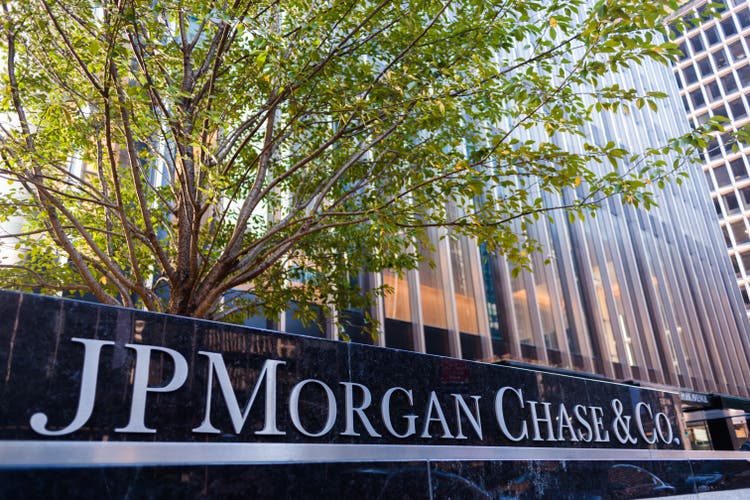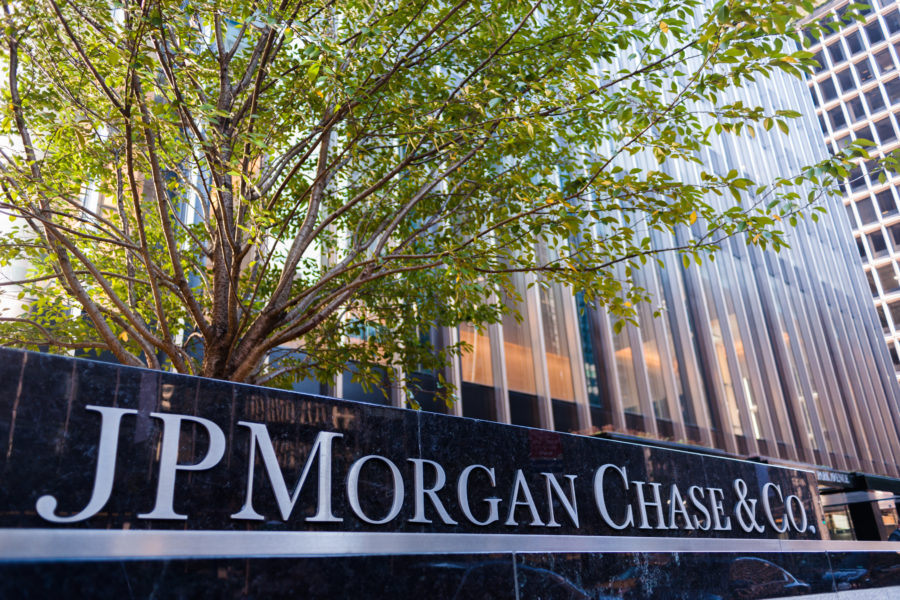Summary:
- JPMorgan posted a good set of earnings for the fourth quarter, with a nearly 10% beat at the pre-provision line and slightly better performance with loan growth and deposit costs.
- Loan growth is likely to continue slowing from here, while deposit beta is likely to continue to increase, creating some near-term growth headwinds.
- Management seems willing to be more flexible on its spending plans if revenue slows more than expected, and capital is now sufficient to restart share buybacks.
- JPMorgan should be able to generate long-term core earnings growth in the mid-single-digits, supporting a near-term fair value into the low-$150s.

subman
This year is likely to be one where management and business quality, as well as past strategic decisions, really show up in the results of bank companies. Most banks will likely see net interest margins peak between Q4’22 and Q2’23, operating leverage will be harder to come by, deposit costs will rise and so too will credit costs. With above-average funding, loan growth and market share growth prospects, and fee-generating businesses, I think JPMorgan (NYSE:JPM) is better placed than most, though I do acknowledge that operating leverage could still prove to be a headwind for this large bank.
My last update on JPMorgan was fairly recent, but the shares have continued to outperform since then, as well as outperforming over the past six and 12 months. My core assumptions haven’t changed that much, though my 2023 numbers are a bit higher now. I’m expecting long-term core growth in the 4% to 5% range, driven not only by fee-generating businesses like its payment operations, but share gains in commercial lending as well. Below the high-$140s to low-$150s I believe these shares are worth consideration.
Solid Execution In A More Challenging Operating Environment
I suspect that we’re going to see more evidence of stress in bank earnings as fourth quarter results come in – not bad results, mind you, but just evidence that the operating environment is getting more challenging. For JPMorgan, though, Q4’22 was a solid quarter across almost all metrics I care about when analyzing the company.
Revenue rose 17% year over year and 3% quarter over quarter, modestly beating expectations (by around 2%) on stronger net interest income. Net interest income rose 48% yoy and 15% qoq, beating by around 6% (or $0.30/share). Net interest margin improved a better-than-expected 38bp qoq (to 2.47%), offsetting modestly weaker-than-expected growth in earning assets (though loans were basically in line). Non-interest income declined 9% yoy and 10% qoq, missing by about 4% (or $0.15/share), with core trading up 8% yoy and down 17% qoq.
Expenses have been a big talking point around JPMorgan, and generally not in a positive way, as some analysts have taken issue with management’s decision to continue to invest substantial sums in the growth of the business irrespective of business cycle. Expenses rose 6% yoy, but did fall 1% qoq were $0.21/share better than feared. Pre-provision profits rose 32% yoy and 8% qoq, beating by around 10% (or $0.36/share).
Of the large peer banks that have reported so far, Bank of America (BAC) reported PPOP growth of 25% yoy/-4% qoq (a $0.06/share beat), Citi (C) reported +5% yoy/-6% qoq (a $0.07/share miss), and Wells Fargo (WFC) reported +17% yoy/+13.5% (a $0.68/share beat).
JPMorgan did report larger-than-expected provisioning expense (taking $0.03/share out of earnings), and this seems consistent with what has been a more conservative outlook for the economy and the credit cycle compared to many analysts.
JPMorgan saw modest growth in tangible book value per share (up 2%), and the bank ended the quarter with a 13.2% CET1 ratio – above the target of 13% and at a level where share buybacks are likely to resume later this year (management indicated up to $12B in buybacks).
Near-Term Challenges, But Still A Path To Growth
The overall U.S. bank system saw a little more than 3% qoq loan growth in Q4’22, with large banks growing their loan books by about 2%. JPMorgan very modestly outperformed, and did so with good middle-market C&I lending growth (up 3.7%) and commercial real estate lending growth (up 1.4%), both of which were above the norms for large bank in the quarter.
Management has noted evidence of weaker capex investment trends and caution with CRE borrowers. At the same time, I think the run-down we’re seeing in bank deposits from commercial customers (down 14% yoy and 1% qoq at JPMorgan) is being motivated by companies looking to use cash on hand in lieu of taking on more debt at this point in the cycle.
Even so, nothing seems to be changing with respect to the company’s growth plans, and the company still sees significant share growth potential in middle market lending. Some of this can be tied to reshoring, as well as efforts to expand the commercial lending effort, including new branches / loan offices in new markets, more efforts to penetrate specialty verticals, and more emphasis on full-service offerings like payment and treasury solutions. I’d also note that non-bank lenders account for more than half of commercial lending in the U.S. and in many cases they have less advantageous funding than JPMorgan, giving the bank a chance to grab share as higher funding costs limit some of these non-bank competitors.
On the consumer side, I’m not too concerned about JPMorgan’s exposures. The mortgage market is unsurprisingly weak now, but JPMorgan’s overall exposure to more vulnerable/stressed consumers is fairly limited. Card lending grew about 5% on an average balance basis, and while there is evidence of credit quality pressure (30-day delinquencies up 22bp, charge-offs up 22%), the numbers are still pretty good on balance.
Funding does remain a risk item to watch, though I think JPMorgan is better placed than many banks. The cumulative interest-bearing deposit beta rose to 38% this quarter, exceeding the prior cycle’s peak (36%). Bank of America and Wells Fargo are still below their prior peaks (and below JPMorgan), while Citi has seen more pressure.
The Outlook
I’m not expecting any rate cuts this year, and I do think there is still risk to JPMorgan’s loan growth, net interest margin, and operating margin leverage outlooks, but I still see relatively less risk here than for the “average” bank. Weaker loan demand should be mitigated by share gains, and while management isn’t backing away from continuing to invest in the business, they did signal more willingness to pull back as needed if revenues underperform their targets for the year.
On the spending/investment side, I think it’s worth pointing out that the company recently closed down its college financial aid business “Frank” that it acquired in 2021 for $175M. JPMorgan is alleging significant fraud, claiming that the number of active users was overstated by more than 14 times (the founder denies these allegations). While fraud is a risk for all buyers when conducting M&A, the scale of misrepresentation that JPMorgan is alleging does raise questions about the bank’s due diligence process. Given the pace of the company’s efforts to acquire more scale in payments targeting various markets, this is an issue worth monitoring.
After factoring in reported Q4 results, guidance, the current macro environment and so on, I’m making fairly modest changes to my model, leading to about 1% higher 2023 expected core earnings and 3% lower earnings in FY’24. I’m looking for a little more than 5% growth over the next five years and 4% to 5% growth over the next 10 years.
Between discounted core earnings, ROTCE-driven P/TBV, and P/E, I believe JPMorgan shares should trade into the high-$140s to the low-$150’s and are priced for a solid low double-digit long-term total annualized return.
The Bottom Line
JPMorgan isn’t the cheapest bank stock, but I do believe it offers a good mix of upside and quality. I see less risk here if the macro outlook deteriorates more than expected in 2023/24, and while I don’t see as much proportionate upside if 2023/24 turns out to be materially better, I would still see the bank having upside in that environment as well. All in all this remains a well-run bank with above-average prospects that’s still trading below its fair value.
Disclosure: I/we have a beneficial long position in the shares of JPM either through stock ownership, options, or other derivatives. I wrote this article myself, and it expresses my own opinions. I am not receiving compensation for it (other than from Seeking Alpha). I have no business relationship with any company whose stock is mentioned in this article.
